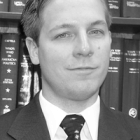The charts below illustrate the different personnel systems coming into the Department of Homeland Security (DHS) and why it's necessary to harmonize them.
As George Nesterczuk writes in his Backgrounder, A Successful Start for the Department of Homeland Security Requires Management Flexibility:
The proposed department would permit the integration of nearly two dozen component agencies under unified leadership so as to function in complementary fashion, eliminating unnecessary duplication and separating out activities with conflicting missions and goals.
The Administration and Congress can learn good lessons from past experiences. More than dollars, the DHS will need organizational, staffing, and funding flexibility if it is to succeed in its mission of protecting the American people from acts of terrorism. ...
The Administration offered a blueprint for this step in its legislative proposal to Congress (H.R. 5005). Of necessity at this formative stage, the proposal leaves many administrative details to subsequent determination. The blueprint calls for flexibility in organizational design, funding, and personnel management. Congress should follow suit as it crafts the final legislation creating the DHS.
Chart 1: Illustrates the numerous variations in the personnel systems of the federal agencies that the President has proposed consolidating into the Department of Homeland Security. Each pink and red box represents an area where an agency has statutory, departmental or agency level deviations from Title 5. Without a flexible personnel system, the DHS will require separate acts of Congress to meld these differing systems into one personnel system.

Chart 2: Shows the Unions and collective bargaining units
that are currently active in the federal agencies that the
President has proposed consolidating into the Department of
Homeland Security and the number of federal employees affected.



